Recommended Books
Grades 9-12 – Japan
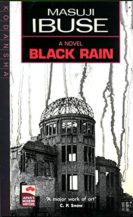
Black Rain (Japan's Modern Writers)
Black Rain is centered around the story of a young woman who was caught in the radioactive “black rain” that fell after the bombing of Hiroshima. lbuse bases his tale on real-life diaries and interviews with victims of the holocaust; the result is a book that is free from sentimentality yet manages to reveal the magnitude of the human suffering caused by the atom bomb. The life of Yasuko, on whom the black rain fell, is changed forever by periodic bouts of radiation sickness and the suspicion that her future children, too, may be affected.
lbuse tempers the horror of his subject with the gentle humor for which he is famous. His sensitivity to the complex web of emotions in a traditional community torn asunder by this historical event has made Black Rain one of the most acclaimed treatments of the Hiroshima story.
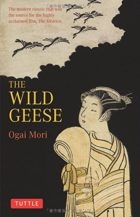
The Wild Geese
This modern classic, written in 1913, was the source for the highly acclaimed film, The Mistress
In The Wild Geese, prominent Japanese novelist Ogai Mori offers a poignant story of unfulfilled love, set against the background of the dizzying social change accompanying the fall of the Meiji regime. The young heroine, Otama, is forced by poverty to become a moneylender’s mistress. She is surrounded by skillfully-drawn characters—her weak-willed father, her virile and calculating lover (and his suspicious wife), and the handsome student who is both the object of her desire and the symbol of her rescue—as well as a colorful procession of Meiji era figures—geisha, students, entertainers, unscrupulous matchmakers, shopkeepers, and greedy landladies.
Like those around her, and like the wild geese of the titles, Otama yearns for the freedom of flight. Her dawning consciousness of her predicament brings the novel to a touching climax.
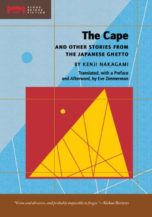
The Cape: and Other Stories from the Japanese Ghetto (Stone Bridge Fiction)
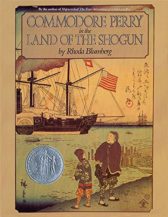
Commodore Perry in the Land of the Shogun
In 1853, few Japanese people knew that a country called America even existed. For centuries, Japan had isolated itself from the outside world by refusing to trade with other countries and even refusing to help shipwrecked sailors, foreign or Japanese. The country’s people still lived under a feudal system like that of Europe in the Middle Ages. But everything began to change when American Commodore Perry and his troops sailed to the Land of the Rising Sun, bringing with them new science and technology, and a new way of life.
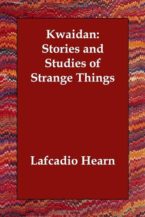
Kwaidan: Stories and Studies of Strange Things
A miscellany of ghost stories, odd tales, and curious observations by a master storyteller who penetrated Japan more deeply than any other Westerner. Lafcadio Hearn captures the folk spirit and quaint “exoticism” of a land thought at the time to be both mysterious and sinister.
Lafcadio Hearn (18501904) gained Japanese citizenship and wrote many books about Japan for Western readers.
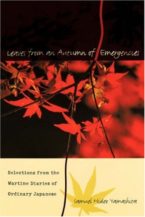
Leaves from an Autumn of Emergencies: Selections from the Wartime Diaries of Ordinary Japanese
The fall of Singapore and the brilliant victories achieved since the start of the war mean we are protected, but I don’t know just how grateful I should be. ―Takahashi Aiko, housewife, February 1942
This is my final departure from the home islands. I have paid my respects to those who have helped me. I have no regrets. ―Itabashi Yasuo, navy kamikaze pilot, February 1944
We had rice gruel for lunch again. There was no tofu in it, but there were potatoes…. We went through with the closing ceremony and received our report cards. Everyone was there. From now on, I’ll persevere and not fail. ―Manabe Ichiro, primary school student, July 1944
This collection of diaries gives readers a powerful, firsthand look at the effects of the Pacific War on eight ordinary Japanese. Immediate, vivid, and at times surprisingly frank, the diaries chronicle the last years of the war and its aftermath as experienced by a navy kamikaze pilot, an army straggler on Okinawa, an elderly Kyoto businessman, a Tokyo housewife, a young working woman in Tokyo, a teenage girl mobilized for war work, and two schoolchildren evacuated to the countryside. Samuel Yamashita’s introduction provides a helpful overview of the historiography on wartime Japan and offers valuable insights into the important, everyday issues that concerned Japanese during a different and disastrously difficult time.
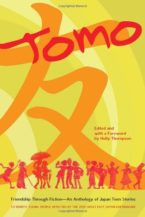
Tomo: Friendship through Fiction: An Anthology of Japan Teen Stories
“A broadly appealing mix of the tragic and droll, comforting, disturbing, exotic and universal” – Kirkus Reviews
“Offers a unique and wide-ranging taste of Japanese life” – Booklist
“The collection is extremely varied, featuring urban and rural settings, contemporary situations and timeless folk tales, humor, and adventure… Numerous stories involve mixed-race parents and children, affording good insights into cultural assimilation. Tomo is an excellent story collection, presenting a rich and varied immersion in Japanese culture from a teen perspective.” – VOYA
“Published on the one-year anniversary of the Japanese tsunami and earthquake, this collection of short stories and poems about Japanese teens is weird and wonderful, studded with the unique color of Japanese teen pop culture, as well as the impact of defining events from the twenty-first century to the present: Pearl Harbor, Hiroshima, the tsunami, earthquake and nuclear disaster.” – Barnes & Noble Review
“Thirty-six stories by writers somehow connected to Japan, five contributors with ties to Tohoku each piece concisely aligns the disparate puzzle of the teenage map…Tomo reverberates with the authentic voice of Japanese and bicultural teens as they face down the confusing adult world before and after 3/11.” – The Japan Times
“From Pasmo travel cards to Harajuku girls to face-offs between a Kendo club and a dance group at the school gym, Japan is placed vividly in the reader’s heart and mind. And that heart would have to be made of the proverbial stone not to feel for the people affected by the earthquake. But Tomo inspires more than sympathyit ignites us to empathy.” – The Asian Review of Books
“The thirty-six stories of Tomo: Friendship Through FictionAn Anthology of Japan Teen Stories cover a wide range of genres (prose, verse, graphic narratives) and feature nine stories translated from the Japanese…most of the authors, many of whom write for adults, will be new to American teens.” – The Horn Book
This aptly named fiction anthologytomo means friend” in Japaneseis a true labor of friendship to benefit teens in Japan whose lives were upended by the violent earthquake and tsunami of March 11, 2011. Authors from Japan and around the world have contributed works of fiction set in or related to Japan. Young adult English-language readers will be able to connect with their Japanese counterparts through stories of contemporary Japanese teens, ninja and yokai teens, folklore teens, mixed-heritage teens, and non-Japanese teens who call Japan home. Tales of friendship, mystery, love, ghosts, magic, science fiction, and history will propel readers to Japan past and present and to Japanese universes abroad.
Portions of the proceeds of Tomo will be donated to the Japanese non-profit, HOPE FOR TOMORROW, to support ongoing relief efforts for teens in Japan.
Edited and with a foreword by Holly Thompson, Tomo contributing authors include Naoko Awa, Deni Bechard, Jennifer Fumiko Cahill, Liza Dalby, Megumi Fujino, Andrew Fukuda, Alan Gratz, Katrina Toshiko Grigg-Saito, Suzanne Kamata, Sachiko Kashiwaba, Kelly Luce, Shogo Oketani and Leza Lowitz, Ryusuke Saito, Graham Salisbury, Fumio Takano, and Wendy Tokunaga, among others.
Holly Thompson is a longtime writing teacher and resident of Japan and author of the young adult verse novel Orchards, which won the 2012 Asian/Pacific American Librarians Association Award for Young Adult Literature . She serves as the regional advisor for the Tokyo chapter of the Society of Children’s Book Writers and Illustrators.
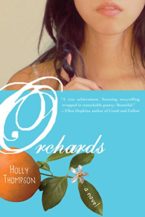
Orchards
Winner of the APALA Asian/Pacific American Award for Young Adult Literature
An ALA-YALSA Best Fiction for Young Adults Book
After a classmate commits suicide, Kana Goldberg—a half-Japanese, half-Jewish American—wonders who is responsible. She and her cliquey friends said some thoughtless things to the girl. Hoping that Kana will reflect on her behavior, her parents pack her off to her mother’s ancestral home in Japan for the summer. There Kana spends hours under the hot sun tending to her family’s mikan orange groves.
Kana’s mixed heritage makes it hard to fit in at first, especially under the critical eye of her traditional grandmother, who has never accepted Kana’s father. But as the summer unfolds, Kana gets to know her relatives, Japan, and village culture, and she begins to process the pain and guilt she feels about the tragedy back home. Then news about a friend sends her world spinning out of orbit all over again.
From the Hardcover edition.
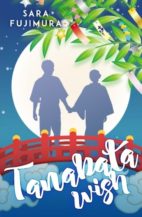
Tanabata Wish
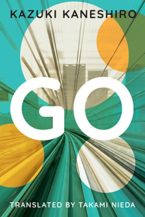
Go: A Coming of Age Novel
For two teens, falling in love is going to make a world of difference in this beautifully translated, bold, and endearing novel about love, loss, and the pain of racial discrimination.
As a Korean student in a Japanese high school, Sugihara has had to defend himself against all kinds of bullies. But nothing could have prepared him for the heartache he feels when he falls hopelessly in love with a Japanese girl named Sakurai. Immersed in their shared love for classical music and foreign movies, the two gradually grow closer and closer.
One night, after being hit by personal tragedy, Sugihara reveals to Sakurai that he is not Japanese—as his name might indicate.
Torn between a chance at self-discovery that he’s ready to seize and the prejudices of others that he can’t control, Sugihara must decide who he wants to be and where he wants to go next. Will Sakurai be able to confront her own bias and accompany him on his journey?
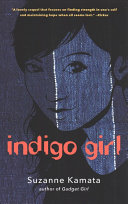
Indigo Girl
Fifteen-year-old Aiko Cassidy, a bicultural girl with cerebral palsy, grew up in Michigan with her single mother. For as long as she could remember, it was just the two of them. When a new stepfather and a baby half sister enter her life, she finds herself on the margins. Having recently come into contact with her biological father, she is invited to spend the summer with his indigo-growing family in a small Japanese farming village. Aiko thinks she just might fit in better in Japan. If nothing else, she figures the trip will inspire her manga story, Gadget Girl.
However, Aiko’s stay in Japan is not quite the easygoing vacation that she expected. Her grandmother is openly hostile toward her, and she soon learns of painful family secrets that have been buried for years. Even so, she takes pleasure in meeting new friends. She is drawn to Taiga, the figure skater who shows her the power of persistence against self-doubt. Sora is a fellow manga enthusiast who introduces Aiko to a wide circle of like-minded artists. And then there is Kotaro, a refugee from the recent devastating earthquake in northeastern Japan.
As she gets to know her biological father and the story of his break with her mother, Aiko begins to rethink the meaning of family and her own place in the world.
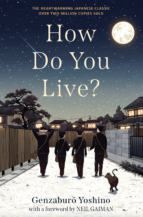
How Do You Live?
First published in 1937, Genzaburō Yoshino’s How Do You Live? has long been acknowledged in Japan as a crossover classic for young readers. Academy Award–winning animator Hayao Miyazaki has called it his favorite childhood book and announced plans to emerge from retirement to make it the basis of his final film.
How Do You Live? is narrated in two voices. The first belongs to Copper, fifteen, who after the death of his father must confront inevitable and enormous change, including his own betrayal of his best friend. In between episodes of Copper’s emerging story, his uncle writes to him in a journal, sharing knowledge and offering advice on life’s big questions as Copper begins to encounter them. Over the course of the story, Copper, like his namesake Copernicus, looks to the stars, and uses his discoveries about the heavens, earth, and human nature to answer the question of how he will live.
This first-ever English-language translation of a Japanese classic about finding one’s place in a world both infinitely large and unimaginably small is perfect for readers of philosophical fiction like The Alchemist and The Little Prince, as well as Miyazaki fans eager to understand one of his most important influences.
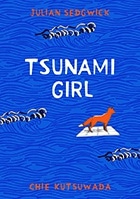
Tsunami Girl
Fifteen-year-old Yuki is struggling at school with her confidence, and goes to Japan to stay with her grandfather, a well-known manga artist and to whom she is very close. But during her visit, a calamitous event occurs – the East Coast Earthquake and Tsunami – and her beloved Grandpa is lost.
Yuki and her friend Taka must make sense of the terrible situation and come to terms with the loss of their life as they knew it – and see that through renewal and with resilience, they can emerge from this tragedy with optimism for the future.
Interwoven with Japanese folk tales, modern-day ghost stories, and the creation of her very own vibrant manga hero, Yuki finds the courage to overcome extraordinary odds, and take her first steps into the world that lies beyond catastrophe.
Told through both prose and manga, with powerful, emotional manga from acclaimed Japanese artist, Chie Kutsuwada, this story for young adults will touch the heart of readers of all ages.
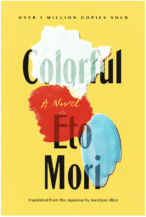
Colorful
“Congratulations, you’ve won the lottery!” shouts the angel Prapura to a formless soul. The soul hasn’t been kicked out of the cycle of rebirth just yet–he’s been given a second chance. He must recall the biggest mistake of his past life while on ‘homestay’ in the body of fourteen-year-old Makoto Kobayashi, who has just committed suicide. It looks like Makoto doesn’t have a single friend, and his family don’t seem to care about him at all. But as the soul begins to live Makoto’s life on his own terms, he grows closer to the family and the people around him, and sees their true colors more clearly, shedding light on Makoto’s misunderstandings.
Since its initial release over twenty years ago, Colorful has become a part of the literary canon, not only in Japan–where it has sold over a million copies–but around the world, having been translated into several different languages. Now, Eto Mori’s beloved classic is finally available in English.
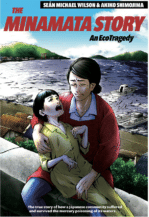
The Minamata Story
A powerful graphic novel /manga that tells the story of “Minamata disease,” a debilitating and sometimes fatal condition caused by the Chisso chemical factory’s careless release of methylmercury into the waters of the coastal community of Minamata in southern Japan. First identified in 1956, it became a hot topic in Japan in the 1970s and 80s, growing into an iconic struggle between people versus corporations and government agencies.
This struggle is relevant today, not simply because many people are still living with the disease but also because, in this time of growing concern over the safety of our environment–viz. Flint, Michigan–Minamata gives us as a very moving example of such human-caused environmental disasters and what we can do about them.

The Color of the Sky Is the Shape of the Heart
Seventeen-year-old Ginny Park is about to get expelled from high school—again. Stephanie, the picture book author who took Ginny into her Oregon home after she was kicked out of school in Hawaii, isn’t upset: she only wants to know why. But Ginny has always been in-between; she can’t bring herself to open up to anyone about her past, or about what prompted her to flee her native Japan. Then, among the scraps of paper and drawings of Stephanie’s stories, Ginny finds a mysterious scrawl that changes everything: The sky is about to fall. Where do you go?
Ginny sets off alone on the road in search of an answer, with only her journal as a confidante. In witty and brutally honest vignettes, and interspersed with old letters from her expatriated family in North Korea, Ginny recounts her adolescence growing up Zainichi, a Japan-born Korean, and the incident that forced her to leave years prior. Inspired by her own childhood, author Chesil creates a portrait of a girl who has been fighting alone against barriers of prejudice, nationality, and injustice all her life—and one searching for a place to belong.
